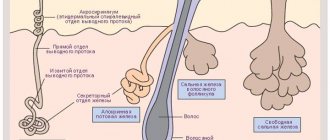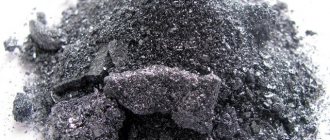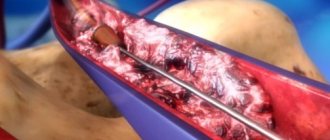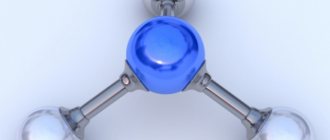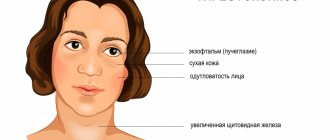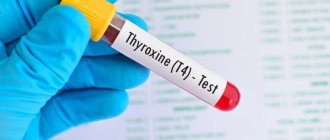The liver is a dense, soft, brownish-red organ and the largest gland in the body. Participates in digestion, metabolism, blood circulation, excretion processes (removal of waste products from the body), and the production of enzymes. Located on the right side in the upper quadrant of the peritoneum. The liver has the highest temperature compared to other organs: from 39 degrees. The weight of the liver in men reaches 1.5 kg, in women – 1.2 kg. The organ secretes up to 1.5 liters of bile per day, which is formed in liver cells and enters the duodenum to participate in the digestion of food.
General information
The liver is one of the most important organs of the human body, which is a glandular formation. How much does a human liver weigh? Its mass reaches one and a half kilograms, thanks to which it performs many vital functions, which we will talk about a little later.
The gland is located in the right hypochondrium, so it is here that the organ is palpated to assess its size, density and outline.
Now we will more accurately describe where the liver is located. The location of the liver in a person depends to some extent on his age. So, in an adult it is located in the right hypochondrium, and slightly extends beyond the border of the midline of the abdomen. In children, the gland occupies most of the abdominal cavity.
The upper border of the liver is at the level of the cartilage of the 5th rib, when assessed along the midclavicular line. Moving along the liver to the left side, we reach the xiphoid process of the sternum, then we head to the cartilage of the 6th rib. The lower border runs along the edge of the costal arch. The gland touches the diaphragm from above, the abdominal wall from the front, and the spinal column, aorta and esophagus from the back. To the left of the gland are organs such as the stomach and duodenum.
The location of the human liver is mesoperitoneal. It is customary to speak of such an arrangement when the organ is not surrounded on all sides by the peritoneum. The physiological structure of the liver does not have compactions, deformations, or additional neoplasms. It is represented by a homogeneous fabric with a small grain size. The edges of the organ are even and the surface is smooth.
The gland has bile ducts and blood vessels. The liver contains hepatocytes (liver cells), which ensure the functioning of the organ and the body as a whole.
Anatomy of the liver
To understand how the liver works, you must first understand its structure.
First of all, let's look at how many lobes there are in the organ, and what is the structure of the human liver. The organ consists of two large elements (lobes) – right and left. The right lobe is much larger than the left lobe - almost six times. What is the name of the ligament that divides the organ into lobes? Its name is sickle-shaped or pendulous. It is represented by a double layer of peritoneum, which is directed from the upper hepatic surface to the diaphragm.
Longitudinal and transverse grooves run along the lower surface of the organ. They additionally distinguish the quadrate and caudate lobes, located between the main (right, left) lobes.
The principle of blood supply to an organ is designed in such a way that it receives blood in two ways. Arterial blood flows through the proper hepatic artery, which divides into two branches and supplies the corresponding lobes. In addition, blood enters the gland through the portal vein, which is formed after the fusion of the vessels of the stomach, intestines, as well as the spleen and pancreas.
The organ has hepatic veins that connect to the inferior vena cava. The pattern of lymph outflow is represented by superficial and deep lymph vessels that pass through the gates of the gland and are also directed along the hepatic veins.
Innervation is provided by the nerve branches of the solar plexus, vagus and phrenic nerves.
Portal triad and acini.
The branches of the portal vein, hepatic artery and bile duct are located nearby, at the outer border of the lobule and form the portal triad. At the periphery of each lobule there are several such portal triads.
The functional unit of the liver is the acinus. This is the part of tissue that surrounds the portal triad and includes lymphatic vessels, nerve fibers and adjacent sectors of two or more lobules. One acini contains about 20 liver cells located between the portal triad and the central vein of each lobule. In a two-dimensional image, a simple acinus looks like a group of vessels surrounded by adjacent sections of lobules, and in a three-dimensional image it looks like a berry (acinus - lat. berry) hanging on a stalk of blood and bile vessels. The acini, the microvascular framework of which consists of the above-mentioned blood and lymphatic vessels, sinusoids and nerves, is the microcirculatory unit of the liver.
The importance of the liver in the human body
Now, knowing the structure of the gland, we can accurately analyze what the liver does. The importance of the liver in human life is quite difficult to overestimate. Each of us is well aware of the role of the liver in digestion. The organ produces bile, which accumulates in the bladder. How much bile is produced per day? Its daily volume fluctuates around 1500 ml.
Bile, entering the ducts, then follows into the intestines, where it accelerates the digestive process. Thanks to bilirubin, cholesterol, phospholipids, as well as bile acids found in bile, the latter performs the following functions:
- emulsification, absorption of fats;
- neutralization of pepsin, which is the main component of gastric juice;
- activates peristalsis;
- stimulates mucus production;
- activates the synthesis of gastrointestinal hormones in the small intestine, which regulate the secretory function of the pancreas;
- prevents the gluing of protein components;
- participates in the formation of feces;
- has an antimicrobial effect.
Thanks to the gland that produces bile, the main process of digestion, begun in the stomach, successfully continues in the intestines, thereby supplying the body with nutrients.
The special importance of the liver is detoxification. The barrier function of the liver lies in its ability to retain many toxic products of protein metabolism that are delivered to the gland through the bloodstream. The organ that functions as a “filter” is responsible for binding ammonia, as well as processing toxic substances (indole, skatole).
Not only endogenous poisons are neutralized, but also toxins that enter the body from the outside. These include medications and various chemical compounds. The human liver is involved in the inactivation of many hormones (estrogens, androgens, as well as pancreatic hormones).
Not everyone knows what function the liver performs during the prenatal period. The importance of the liver for the fetus during pregnancy is the production of red blood elements - red blood cells, which ensure the delivery of oxygen to all tissues of the embryo.
Few of us know what the liver does besides aid in digestion. Thus, the following main functions of the liver are distinguished, which are responsible for the vital functions of the entire organism:
vitamin exchange. The gland is actively involved in the synthesis of fat-soluble vitamins (A, D, K, E), deposits and also removes excess vitamins A, C, PP;
During fasting, when the body does not receive enough vitamins from food, they are consumed from the gland reserve.
- amino acid synthesis. How much protein is synthesized in the gland? The total number includes albumin, globulins and clotting factors, which are responsible for stopping bleeding. In addition, amino acids are accumulated here in case of protein deficiency from food. The role of the liver in the human body is especially important in cases of exhaustion, massive blood loss and severe poisoning, when there is a lack of proteins. The fact is that the gland releases reserve amino acids, thereby replenishing protein losses. The stock is completely renewed every 20 days. We draw attention to the fact that the organ also produces alpha-fetoprotein, which inhibits immune defense. This protein is detected in the blood during pregnancy, cancer of the gonads and liver;
- lipid metabolism. The gland takes an active part in the synthesis of cholesterol, bile acids, as well as the accumulation of fat. The intensity of use of the latter increases with heavy physical activity. Fatty acids are actively formed during fasting, during the digestion of food and between meals. Fat and carbohydrate metabolism are interconnected. With excess glucose entering the body, lipid synthesis increases. When it is deficient, it is formed from proteins or fats;
- carbohydrate metabolism. Now let’s look at what the liver is responsible for after carbohydrates enter the body. It participates in metabolic processes, transforms carbohydrates into glycogen, and also stores the latter in an improvised depot. When a person spends a lot of energy during intense physical activity, glycogen is converted into glucose, which saturates the cells and provides them with energy;
- pigment exchange. In the gland, free bilirubin is transformed into bound bilirubin, after which it is excreted with bile through the intestine. An increased content of unbound bilirubin in the bloodstream causes endogenous intoxication and icteric syndrome;
- enzymatic functions of the liver in the human body. Thanks to the indicators of ALT, AST, alkaline phosphatase, GGT in a biochemical blood test, it is possible to assess liver function. An increase in the level of liver enzymes in the bloodstream may indicate damage to hepatocytes, for example, in hepatitis, cirrhosis, as well as necrosis of the heart muscle. In this case, the structure of the liver should be assessed to determine the severity and extent of the pathological process;
- immune, allergic functions of the liver in the body. The gland is involved in immunopoiesis, in other words, in the maturation of cells that work in the immune system. The body's reaction to allergic factors depends on it.
The gland can repair itself, as it has an amazing ability to regenerate. Note that the rapid increase in volume is somewhat deceptive, since it occurs due to an increase in the size of the remaining functional cells - hepatocytes. While the physiological structure of the liver is restored in full much later. In this regard, normalization of human liver function also requires a long period.
There is another way to restore the gland - transplantation. It can only be carried out by a high-level specialist.
An organ transplant is a very expensive operation, so not all people who need a transplant can pay for it. It is carried out when a specialist confirms the inability of hepatocytes to provide the physiological functionality of the organ. Liver failure is diagnosed based on clinical signs, laboratory and instrumental examination results. If a user wants to play with blackjack bonuses, they will likely face strict betting limits of 5%. Triumph Casino gives such a bonus to everyone who tops up their account with at least 2,000 UAH; The wager is X35. Once on the official website of the Pin Up casino, users are immediately offered bonuses on their first deposit. The casino policy may be revised, so the nuances of receiving it need to be clarified periodically. For more than three centuries, roulette has been considered the most popular game in casinos around the world.
Treatment
Most illnesses are treated in a hospital. And many diseases can be treated in simple ways. If this is alcoholic hepatosis, then you should forget about alcohol and choose a diet. In case of toxic poisoning, poisons are removed from the blood through detoxification. Other diseases can be cured by taking antibacterial and antiviral drugs. Surgeon intervention is necessary in the presence of cysts and tumor formations.
And if pain in the gland is due to injury or physical activity, then you should just rest. No treatment as such is required.
Pain relief medications (first aid for liver pain)
The following special drugs are used to help relieve spasm and severe pain in the liver:
- No-shpa
You can take tablets, but it is advisable to administer the medicine intramuscularly, because in this form the drug can relieve suffering in a shorter time than tablets. But we must also forget that No-spa is not used for liver failure.
- Papaverine
Its injections are also used to suppress pain. The direct purpose of the drug is to relax the smooth muscles of the digestive and genitourinary systems. But, again, the use of this drug for liver failure is prohibited.
This drug is administered in various ways.
- Analgin
You cannot take analgin yourself, because... it may mislead your doctor by dulling pain or changing signs of pathology. And also, Analgin additionally loads the exocrine gland.
However, the doctor may prescribe injections of this drug if he considers it necessary.
How to cleanse the liver with folk remedies
Although it was indicated that you cannot self-medicate for pain in the liver, it is still worth noting a couple of points about alternative medicine. You can try liver herbal teas, they are sold in pharmacies and do not require a prescription from a doctor.
For this purpose, we have written a separate article, and we advise you to read it: How to cleanse the liver at home quickly and effectively using folk remedies to remove toxins.
With all this, you should not abuse traditional medicine. Since inflammatory processes can lead to cirrhosis of the liver.
Diet for liver diseases
Let's start with the fact that it is necessary to eliminate bad habits (smoking and alcohol).
Products whose consumption should be minimized:
- Alcohol. Exceptions may include medications (tinctures, decoctions, etc.);
- Butter. You shouldn’t cut it out of your diet at all, because oil has a beneficial effect on some organs;
- Fast food. Absolutely forbidden. Fast food products contain a huge number of components hazardous to health;
- Pork lard, duck and goose meat are recommended to be consumed in small portions;
- Kiwi. You should also reduce your consumption of this fruit;
- Sweet and rich pastries;
- Hot spices and smoked meats.
To prevent liver diseases at home, you should not suddenly change your diet, because this can have a bad effect on the condition of the liver. All changes in diet must be made gradually.
You should drink no more than three liters of fluid per day. It is advised to eat boiled and steamed food. It is also recommended to consume food before 8 pm.
To prevent liver problems, you need to include a number of foods in your diet:
- Wholemeal breads and pastries;
- Vegetable soups with low-fat broth;
- Fresh vegetables and fruits;
- Dairy products with 0% fat content;
- Boiled and stewed fish;
- Freshly squeezed juices, not strong tea and coffee.
Proper nutrition is the key to a healthy liver.
Clinical manifestations of pathologies
Everyone needs to know what the liver is for, how important it is, and how long it takes to suspect liver dysfunction. During the diagnosis, the patient is interviewed, the size, density, surface of the organ is analyzed, and liver function is assessed.
The gland can be affected by:
- Cirrhosis. The structure of the liver is represented by a pathological proliferation of fibrous (connective) tissue, which replaces functional hepatocytes. Liver dysfunction may be caused by:
- chronic alcoholism;
- hepatitis of viral etiology;
- infection of the gland by helminths, Trichomonas.
- Oncological process – cancer. The reasons for its occurrence are not fully known, however, among the predisposing factors it is worth highlighting:
- cirrhosis;
- viral hepatitis;
- alcoholism;
- contact with carcinogenic substances;
- hereditary predisposition.
- Hemangiomas, or abnormalities of vascular development.
- Cysts (parasitic - echinococcosis, as well as non-parasitic).
As soon as it is noticed that the liver hurts, you should consult a doctor. The specialist will examine the body, especially carefully palpate the area of the right hypochondrium, and prescribe the necessary examinations. Palpation can be carried out on the back or side. In addition, you should pay attention to the main symptoms indicating possible organ dysfunction:
- weakness, feeling of constant fatigue;
- weight loss;
- vomiting, nausea, bloating, indigestion;
- yellowing of mucous membranes and skin;
- causeless increase in temperature;
- itchy skin;
- spider veins;
- a feeling of bitterness in the mouth;
- excessive sweating;
- hypersensitivity to odors;
- change in color of stool and urine.
The listed symptoms are the basis for contacting a gastroenterologist, who, through a full examination, will identify abnormalities in the functioning of the gland and prescribe effective therapy. Only a specialist will be able to figure out what is the cause of liver dysfunction, so you should not self-medicate.
